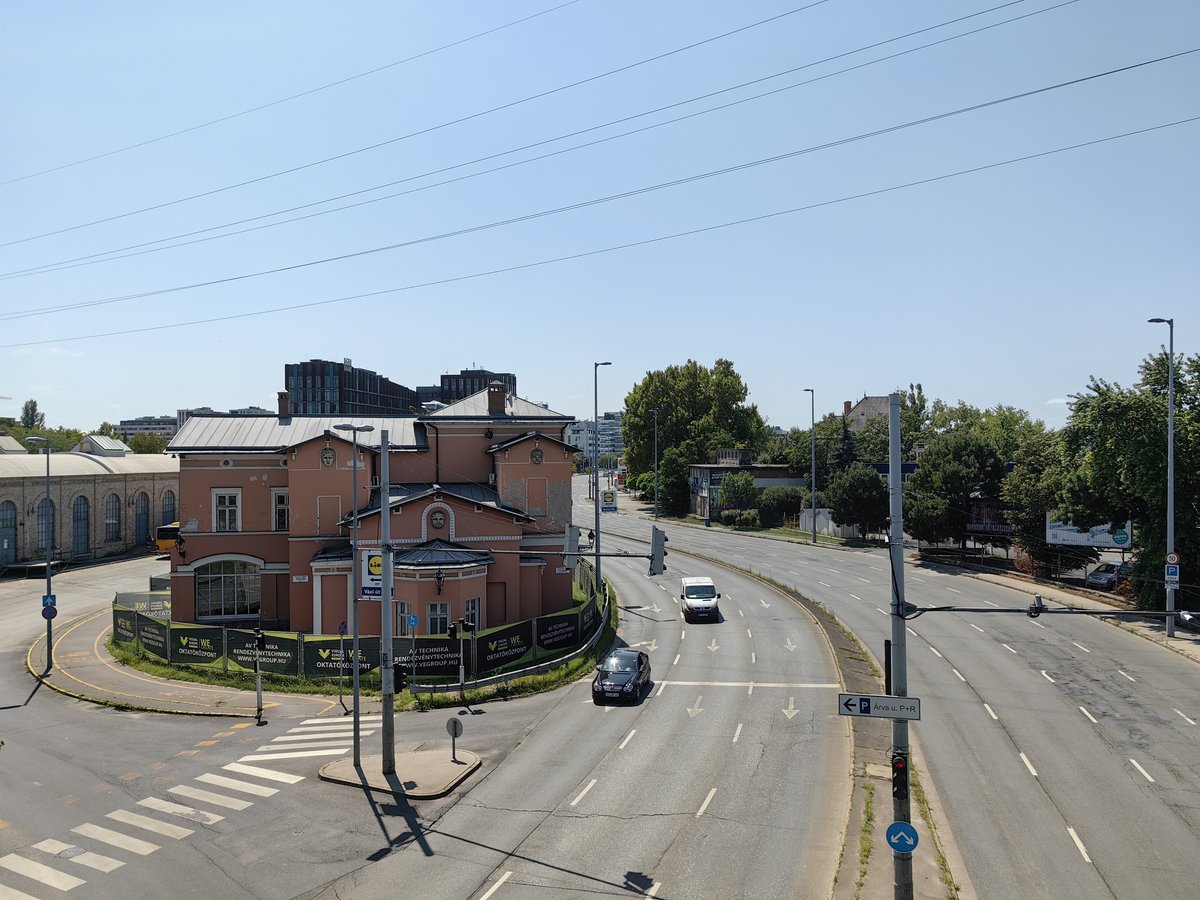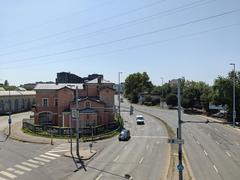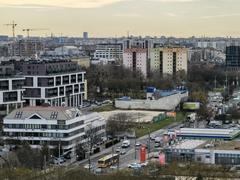
Váci Utca Budapest: Ultimate Visiting Hours, Tickets, and Historical Sites Guide
Date: 15/06/2025
Introduction: The Heart of Budapest
Váci Utca, located in the center of Budapest, is one of Hungary’s most celebrated pedestrian boulevards. Famed for its vibrant history, architectural beauty, and modern commercial atmosphere, this iconic street has evolved from a medieval city route into a lively destination that blends the city’s past with its cosmopolitan present (budapest.net). Spanning approximately 1.2 kilometers from Vörösmarty Square to the Central Market Hall at Fővám Square, Váci Utca invites visitors to experience Budapest’s unique urban tapestry, offering historic landmarks, premier shopping, and culinary delights.
The street is a living showcase of architectural styles from neoclassical to art nouveau, with many buildings dating back to the 18th and 19th centuries (travelguidebudapest.com). Beyond its visual appeal, Váci Utca thrives as a commercial and cultural hub, animated by street performances, art galleries, and a mix of international brands and local artisans. Its pedestrian-friendly design ensures accessibility, while its proximity to major metro stations and tram lines makes it easy to reach for all travelers.
This guide provides essential information on visiting hours, tickets, accessibility, shopping, dining, nearby attractions, and practical travel tips—everything you need to make the most of your time on Váci Utca and its northern extension, Váci Út. Whether you’re interested in history, culture, shopping, or cuisine, Váci Utca is a must-see destination in Budapest (budapestbylocals.com; alle.travel).
Contents
- Medieval Origins and Early Development
- 18th and 19th Century Transformation
- Architectural Heritage and Notable Buildings
- Váci Utca in the 20th Century: Consumer Socialism and Tourism
- Preservation and Modern Significance
- Visiting Hours, Tickets & Accessibility
- Shopping, Dining, and Services
- Cultural Life and Social Interaction
- Economic Impact and Urban Development
- Accessibility and Inclusivity
- Travel Tips and Photo Spots
- Váci Út: Hours, Attractions, Shopping & Dining
- Safety, Local Customs, and Practical Tips
- Frequently Asked Questions (FAQ)
- Visuals and Interactive Elements
- Useful Contacts and Emergency Information
- Conclusion & Summary
- Official Sources
A Walk Through History
Medieval Origins and Early Development
Originally part of the city’s medieval defenses, Váci Utca’s path led to a major city gate, underscoring its strategic importance. This early role laid the foundation for its future as a central artery in Budapest’s urban life (budapest.net).
18th and 19th Century Transformation
The 18th century saw Váci Utca’s emergence as a prestigious address, with the city’s elite establishing grand townhouses along its length. The oldest surviving building, No. 13, dates to 1805 and exemplifies early 19th-century urban architecture (budapest.net). The street’s transformation reflected broader European trends, emphasizing elegance and the harmonious coexistence of public and private spaces.
Architectural Heritage and Notable Buildings
Váci Utca’s architecture is a visual journey through Budapest’s evolution. Notable addresses—such as Nos. 5, 11a, 13, 15, and 18—feature elaborate facades and intricate stonework (travelguidebudapest.com). The street also boasts unique features like underground shopping centers in historic cellars. The Csók Gallery and renowned porcelain shops (Zsolnay, Herend) on Kígyó Street offer insight into Hungary’s artistic legacy (travelguidebudapest.com).
Váci Utca in the 20th Century: Consumer Socialism and Tourism
In the late 20th century, Váci Utca became a symbol of “consumer socialism,” offering Western goods and vibrant street life unusual for the Eastern Bloc. After 1989, it rapidly evolved into a premier tourist destination, with upscale boutiques and international brands joining traditional shops (travelguidebudapest.com).
Preservation and Modern Significance
Despite commercial pressures, Váci Utca retains its historical character thanks to careful restoration and pedestrianization. It connects significant landmarks, including Vörösmarty Square, the Central Market Hall, the Inner City Parish Church, the Great Synagogue, and the Rudas Thermal Bath (budapest.net).
Practical Visitor Information
Visiting Hours & Tickets
- Street Access: Open 24/7. No entrance fee—Váci Utca is a public space.
- Shops & Cafés: Typically open 10:00–20:00; opening hours may vary, especially on Sundays and holidays.
- Attractions: Some galleries and museums along or near Váci Utca require tickets—please check individual venues for details.
- Guided Tours: Walking tours are available and recommended for deeper historical and cultural context.
Accessibility
- Pedestrianized: The entire street is pedestrian-only, with smooth pavements and ramps for wheelchair and stroller access.
- Transport: Metro stations Vörösmarty tér (M1) and Ferenciek tere (M3) are closest. Multiple tram and bus lines serve the vicinity (alle.travel).
Special Events
Look out for seasonal markets, festivals, and performances, especially during Christmas and the Budapest Spring Festival. Check event calendars for current listings.
Shopping, Dining, and Services
Retail Landscape
From luxury brands and international chains in the north to traditional Hungarian handicrafts and antiques in the south, Váci Utca is Budapest’s top shopping destination (Budapest.city). The Great Market Hall offers authentic local products.
Culinary Experiences
Enjoy Hungarian specialties at historic cafés like Gerbeaud, or sample international cuisine and contemporary eateries. The Central Market Hall is a top stop for food lovers (alle.travel).
Cultural Life and Social Interaction
Street performers, art installations, and nearby theaters contribute to Váci Utca’s lively atmosphere. The street’s proximity to cultural institutions and landmarks—like the Danube Promenade and St. Stephen’s Basilica—makes it a hub for both locals and tourists (Just Budapest).
Váci Út: Modern Urban Corridor
Overview
Váci Út, the northern extension of Váci Utca, is a major avenue featuring a mix of modern office buildings, shopping malls like WestEnd City Center, and historic sites such as the Nyugati Railway Station (buildingconnections.eu).
Key Attractions
- Nyugati Railway Station: Historic terminal by the Eiffel Company, open daily.
- WestEnd City Center: Over 400 shops and entertainment venues, open 10:00–21:00.
- Lehel Market: Local food and crafts, open Monday–Saturday.
- Szent István Park: Green oasis, open year-round (Travelling Mandala).
Accessibility & Urban Development
Recent EU-funded projects aim to improve accessibility, safety, and sustainability along Váci Út, ensuring a barrier-free environment for all (buildingconnections.eu).
Practical Tips for a Memorable Visit
- Best Times: Late spring to early autumn for mild weather and vibrant street life.
- Photo Spots: Vörösmarty Square, Central Market Hall, Danube Promenade at sunset.
- Transport: Metro Line 3 (blue) for Váci Út; multiple tram and bus lines for both streets.
- Currency: Pay in Hungarian Forint (HUF); cards are widely accepted.
- Tipping: 10–15% in restaurants if not included in the bill.
- Safety: Watch for pickpockets in crowded areas; follow local laws on alcohol and smoking.
- Public Facilities: Restrooms at Vörösmarty tér, Fővám tér, and major shopping centers.
- Connectivity: Free Wi-Fi in public areas; prepaid SIMs widely available.
Frequently Asked Questions (FAQ)
Q: Is there an entrance fee for Váci Utca?
A: No, Váci Utca is a public street and free to access.
Q: What are the typical shop opening hours?
A: Most shops are open 10:00–20:00 daily; hours may vary.
Q: Are guided tours available?
A: Yes, several walking tours are offered by local operators.
Q: Is the street wheelchair accessible?
A: Yes, with smooth surfaces and curb cuts throughout.
Q: Can I use credit cards?
A: Yes, cards are widely accepted, but carry some cash for markets and small purchases.
Visuals and Interactive Resources
- Interactive Map of Váci Utca and Attractions
- 360° Virtual Tour of Váci Utca Alt: “Váci Utca pedestrian street in Budapest, shops and cafés lining the cobblestone street” Alt: “Historic Central Market Hall near Váci Utca in Budapest”
Useful Contacts and Emergency Information
- Emergency Services: Dial 112
- Tourist Police: Present on Váci Utca to assist visitors
- Tourist Information Office: Vörösmarty Square
Conclusion & Summary
Váci Utca and Váci Út together exemplify Budapest’s dynamic blend of history, culture, and modern urban energy. From medieval routes to bustling shopping districts and vibrant festivals, these iconic streets invite exploration and discovery at every turn (budapest.net; travelguidebudapest.com). Whether you’re in search of historical architecture, authentic Hungarian cuisine, or the latest in fashion and art, Váci Utca delivers an unforgettable Budapest experience.
For enhanced exploration, use the Audiala app for guided tours and real-time updates, and follow us on social media for the latest tips and inspiration. Plan your journey and see why Váci Utca remains at the heart of Budapest’s allure.
Official Sources
- budapest.net – Visiting Váci Utca: Hours, Tickets & Historical Guide to Budapest’s Iconic Street
- travelguidebudapest.com – Architectural Heritage and Notable Buildings on Váci Utca
- budapestbylocals.com – Cultural and Commercial Significance of Váci utca and Váci Út
- buildingconnections.eu – Urban Renewal and Development of Váci Út
- alle.travel – Discover Váci Utca: Visiting Hours, Shopping Tips & Budapest Historical Sites









































































































































































